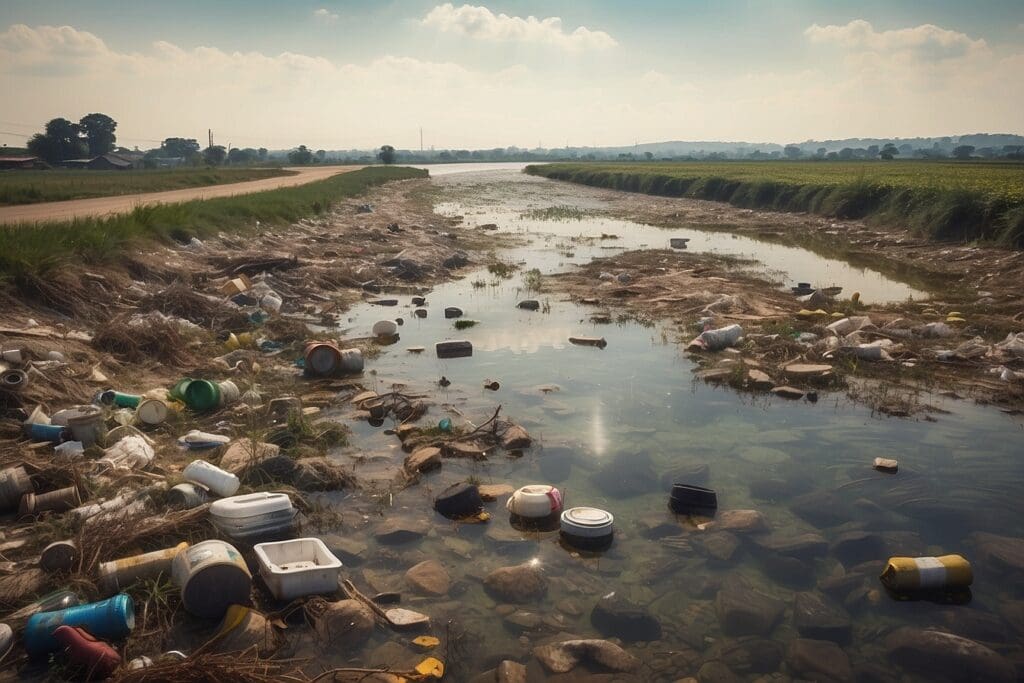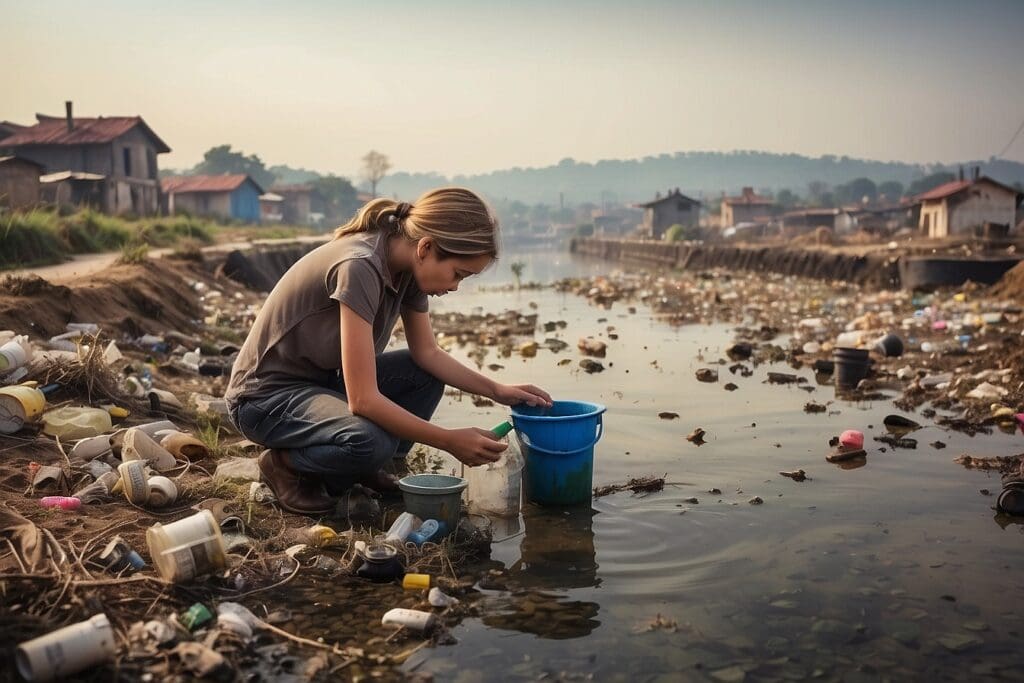Have you ever wondered where the mindless flush of a toilet delivers your household waste? What about the fate of liquid waste, or “effluent,” generated through industrial processes? Understandably, most people do not ponder the destinations of human and industrial waste, possessing an out-of-sight-out-of-mind attitude. However, reality reminds us that these waste products do not just disappear into thin air. In fact, the majority of sewage and biological waste produced are dumped into lakes and rivers, which then behave as conduits to the sea.1 There are many sources of this waste, the three most impactful being: household, industrial, and agricultural processes. While the 1972 U.S. Clean Water Act safeguards against irrevocable environmental damage by necessarily regulating pollutant discharge into receiving water bodies, the legislation and ensuing wastewater treatment practices are not foolproof.2 Thus, while unpleasant to think about, understanding the varying effects that sewage, otherwise known as wastewater, has on our nation’s waterways is absolutely critical. Just as important is the realization that actions can be taken on an individual-by-individual, day-by-day basis to protect and conserve our precious water resources.
Household Wastewater
Every flush of the toilet or flick of the garbage disposal creates what is known as “sewage,” otherwise called wastewater. Within a fraction of a second, this wastewater is conveyed through underground pipes to a municipal waste treatment plant where it undergoes up to three stages of treatment.3 The primary treatment, or the first stage, removes solid organic matter and scum from the wastewater. During the secondary treatment, the wastewater is inoculated with bacteria that effectively consume and breakdown the less visible organic materials and nutrients; this stage is 90 percent effective in removing residual pollutants.4 Lastly, the tertiary treatment—although not always necessary depending on the treatment plant and composition of waste—uses chemicals to eradicate remaining concentrations of phosphorous and nitrogen nutrients. The water is then chlorinated in order to kill remaining bacteria.5 Even after extensive treatment, however, discharged wastewater may contain traces of pollutants including pathogens, toxic contaminants, organic material, and nutrients.6
 7
7
More commonly, household level water pollution occurs when the capacity of combined sewer systems, or systems that comingle stormwater runoff, domestic sewage, and industrial wastewater, has been exceeded as a result of heavy precipitation events.8 This can cause a backup of the sewage system and can lead to overflows consisting of “untreated human and industrial waste, toxic materials, and debris,” which are then carried into nearby waterways. Today, approximately 722 cities in the United States are faced with critical policy decisions necessary to promote effective and environmentally sound stormwater catchment systems.9
Industrial Wastewater
Clean Water Act necessarily ensures that proper action is taken to reduce effluent discharge thereby protecting the “chemical, physical and biological integrity of the Nation’s waters” (Section 101).13 Under the Clean Water Act, industrial facilities are required to obtain National Pollutant Discharge Elimination System (NPDES) permits—through which water pollution is regulated—in order to permissibly discharge treated wastewaters into surface waters. The NPDES permit program specifically regulates point source pollution, or discrete conveyances through which pollutants are discharged.14 By establishing and enforcing effluent limitations, the NPDES forces industries to either change production practices or implement more efficient treatment technology.
Agricultural Runoff

The agriculture industry is defensibly one of the largest contributors to impaired water bodies today. In the United States alone, 330 million acres of fruitful land are dedicated to agriculture, so one can only imagine the amount of agro-chemicals required to meet domestic, as well as, global food demands.15 Improper management of commercial fertilizers and animal manure application has led to an excess amount of nutrients that subsequently find their way into nearby water systems. In fact, approximately one half of every ton of fertilizer being applied is discharged into local waterways, rendering the majority of fertilizer application ineffective and wasteful.16
The issue herein lies in nutrient runoff, which occurs when nutrients (phosphorous or nitrogen) are picked up during precipitation events and flushed into waterways. This overload of nutrients is especially detrimental to water systems as it leads to a process known as dead zone ,” these lifeless areas pose a huge threat, not only to the environment, but also to local economies and public health. Furthermore, agricultural runoff is a nonpoint source of pollution, meaning that it is not discharged from a discrete conveyance such as a power plant, pipe, or channel.18 This makes regulation of nutrient overload extremely difficult as it comes from diffuse sources.
 19
19
For a full discussion on acid rain, another contributor to water pollution, read here .
Water Pollution Prevention
In the end, no one individual can control what happens at either the industrial or agricultural level. But the good news is we can take grassroots action in order to keep our waters clean! Here are a few simple yet meaningful guidelines to live by on a day-to-day basis:
- Conserve : turn off the water when it is not needed. This will not only protect against water shortages but will “reduce the amount of contaminated water that needs treatment.”20
- Think before you act: avoid throwing paints, oils, or chemicals down the drain.
- Be environmentally friendly: use environmentally friendly household products as well as organic fertilizer when gardening.
As stewards of the environment, it is our duty to be mindful of our actions. Taking a few extra seconds to turn off the water can do wonders for the waterways on which we so depend.





